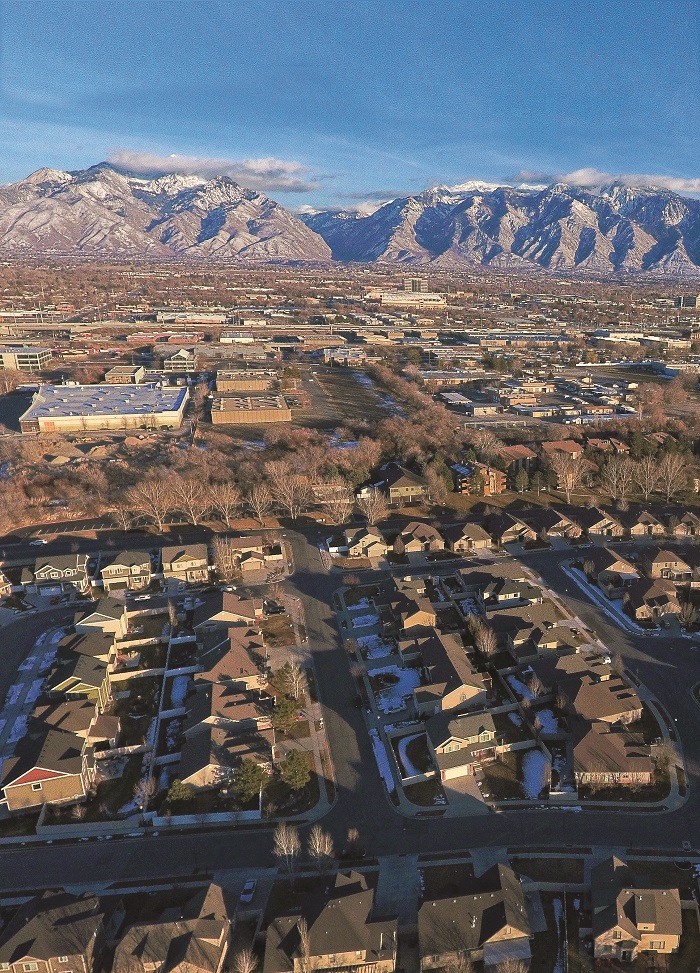
The suburbs are a uniquely American invention. But how did they come about? Back in the late 1930s, after America suffered the worst ravages of the Great Depression, most agreed that big cities with congestion, poverty, industrial pollution and blight, must be drastically redesigned. Lewis Mumford’s The City, was a propaganda film offering an alternative vision to cities for Americans, that involved moving more of the population to smaller garden cities.
The vision was to marry city amenities with the advantages of country living, allowing residents to live in homes with big backyards and white picket fences in smaller communities—places where “residents could have a voice in local matters” and live beside the farms that sustained them. This Utopian dream was the product of the American Institute of Planners, from an outline by New Deal filmmaker, Pare Lorentz.
“Smoke makes prosparity they tell us. Smoke makes prosperity, even if you’ve got to choke on it…This slag heap wasn’t ment for the children. There is poison in the air we breathe their is poison in the river.”
The City 1939
Screened to audiences at the 1939 World’s Fair as a part of the City of Tomorrow exhibit, the film is entertaining and enlightening. Aaron Copland’s score and it’s narrative arc, beginning with images of urban blight, poverty and hardship, contrasted with idyllic farm communities, is inspiring. It was a huge hit, especially with the growing number of New Deal government agents at the time, and Americans seeking a brighter future. Special financing options provided by the melding of federal banking with housing and urban development provisions made the dream of garden cities, which morphed into the suburbs, a reality.
Well not exactly…
The Garden City
The concept of the “garden city” was lost when pragmatic developers and bankers undermined the Utopian planners. It wasn’t until the post WWII era that the building of interstate highways, spurred by the hysteria surrounding nuclear attacks, allowed for the major arteries to facilitate suburban spread across the United States.
Today, the suburbs of Utah are ever-sprawling. While denounced by urbanite elitists (like myself) as voracious wastes of farmland, Utah’s large families find suburban life appealing due to the premium placed on maximum square footage for the lowest price. But the most challenging problem with less dense, urban populations is infrastructure, open space and policing.
How do cities fund massive corridors along with a wide array of utilities like power lines, sewer and water lines, all stretching greater distances within suburbs? The suburbs also lack in expensive centralized police forces and clearly can’t handle the growing homeless problem.
Many suburbs also fail to afford expensive amenities like parks and open space. In Europe, where land is scarce, they know it’s much better to build up than out. The original garden city concept imagined high-rise living surrounded by gardens and open space, but we don’t want that, as evidenced by the opposition to the new proposal for the former Cottonwood Mall site.
The Reason Why Big-Box Store Dominate the Suburbs
The solution to the funding problem for suburbs has been big-box stores and chain store retail. While boxes and chains make suburbs appear homogeneous, they offer suburban cities a reliable source of property and sales tax revenue. This has created a game where suburban cities compete for the best chains to locate in their areas by offering tax abatements and corporate welfare.
In this issue we attempted to find out if all of the millions of dollars of taxpayer money doled out to attract the best of the big boxes has produced an acceptable return on investment (ROI) for residents. It’s clear that these deals and deal makers have caused crony capitalism to run amok in the suburbs. Sandy residents have reaped the rewards by not seeing a property tax increase during the 23 years of Tom Dolan’s administration. Maybe the rent seekers and political partners are doing right by residents.
To find out, we wanted to examine studies to see if residents have truly benefited from these investments by our state, county and city economic development leaders. No such studies exist. So we used the power of GRAMA (the freedom of information act) to find out. We learned that at this time we aren’t granted the privilege of obtaining sales tax revenue information on any specific big box stores. Eric Peterson has worked on this for two months, and we are appealing this decision, because we believe residents have the right to know.
The Decline of the Big Box Store
Today, across the country, big boxes and department stores are closing at a rapid pace. In Utah, about a dozen big boxes have closed, and certainly more will close as price-conscious consumers make the shift to online retail. What impact will this have on communities? What is the future of the suburbs? Can the suburbs survive? What will happen in the post-mall, post big box era? In this jam-packed issue of Utah Stories, we attempt to answer these questions.

